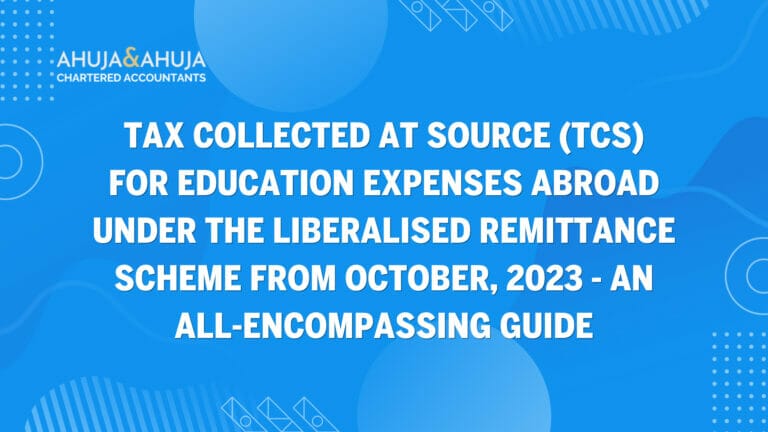All About Form 67 and How to Claim Foreign Tax Credit in India
As globalization integrates world economies, individuals often find opportunities and responsibilities crossing the borders. For Indian residents who earn income outside India, understanding and managing double taxation gains paramount importance in avoiding undue fiscal burdens. In India, income earned globally is taxable, which leads to the issue of the same income being taxed both abroad and in India. This could significantly impact financial planning and cash flows, particularly for those with cross-border financial activities.
What is Foreign Tax Credit?
Foreign Tax Credit (FTC) is a tax relief designed to eliminate or mitigate the issue of the same income being taxed by two or more countries. It is provided to residents to prevent their income from being taxed both in the country of origin and the residence. By effectively managing FTC, taxpayers can ensure they are not penalized by the dual tax burdens.
Relevance of Understanding Tax Status and Agreements
Determining your tax obligations in India hinges significantly on your residential status. For instance, non-resident Indians (NRIs) and expatriates are taxed differently compared to residents. The rules are nuanced, and understanding your precise status is crucial in managing your tax liabilities effectively.
Additionally, India has established several Double Taxation Avoidance Agreements (DTAAs) with other countries. These agreements are crucial for NRIs, expatriates, and residents who earn foreign income, as they stipulate reduced tax rates and exemptions depending on the agreement terms between India and the foreign country.
Importance of Tax Residency Certificate and Understanding DTAAs
To avail the benefits under DTAAs, it is often necessary to obtain a Tax Residency Certificate (TRC) from the country where the income is earned. The TRC serves as a proof to the tax authorities that you are a resident of a particular country and eligible for the benefits under the DTAA.
Navigating through the complexities of international taxation requires a thorough understanding and strategic planning. For detailed information and guidance on taxation of expatriates or other specifics of international taxation, you might consider visiting Ahuja & Ahuja’s international taxation services page.
Deep Dive into Form 67 and the Procedural Aspects of Claiming Foreign Tax Credit
Understanding the procedural necessities for claiming Foreign Tax Credit (FTC) under the Indian tax system is vital. For taxpayers earning foreign income, the submission of Form 67 is crucial. This form facilitates the process to claim FTC, ensuring that the income reported and taxes paid outside of India are recognized within the Indian taxation framework. Let’s examine the critical elements of Form 67.
Filing Form 67: Step-by-Step Overview
Eligibility Criteria: Firstly, determine if you are eligible to claim FTC. You should have paid tax in a country with which India has a DTAA or, absent such an agreement, any foreign country as per Section 91 of the IT Act.
Documentation Needed: To file Form 67, gather all necessary documents including:
- A certificate or statement specifying the nature of income and the amount of tax deducted or paid abroad.
- Relevant tax return filed in the foreign country, or a tax certificate issued by the foreign tax authority, authenticating the taxes paid.
3.Online Filing: Form 67 must be filed online through the Income Tax e-filing portal. This needs to be done before submitting your annual income tax return in India.
Information Required:
- Details about the foreign income in Indian Rupees (INR).
- Exact amount of foreign tax paid, also denominated in INR.
- The specific country where tax was paid.
- Appropriate exchange rates used to calculate the tax credit.
Timelines and Due Dates
It’s imperative to file Form 67 on or before the due date prescribed under section 139(1) of the Income Tax Act. Missing this deadline may disqualify you from receiving the tax credit for that fiscal year, which would mean paying more tax than necessary.
Critical Insights and Issues in Filing Form 67
- Exchange Rates: Accurately converting the foreign tax paid into INR is crucial and must use the Tele-Transfer Rate from the last day of the month preceding the tax payment.
- Disputed Taxes: Be mindful that no FTC is available for disputed tax amounts in the foreign country until they are resolved.
- Refunds and Adjustments: If a refund is obtained on the foreign taxes for which credit has been claimed, it is imperative to adjust this against the FTC claimed to comply with Indian tax laws.
By understanding these components of filing Form 67, taxpayers can maneuver through the complexities of dual taxation and effectively reduce their tax liabilities. For those requiring assistance, engaging with a tax consultant or visiting specialized resources such as NRI taxation services can provide tailored advice and help streamline the process.
Practical Examples about Foreign Tax Credit Claims
Navigating the process of claiming Foreign Tax Credit (FTC) can be complex. Practical examples and a detailed FAQ section can provide clarity and aid in understanding how to apply the rules in real-world scenarios. Let’s explore some examples and answer common questions related to filing Form 67 and claiming FTC.
Practical Example: Claiming FTC
Scenario:
Mr. Raj, an Indian resident, works as a software consultant and has earned income from the United States and the UK in the fiscal year. He paid taxes in both countries on his income. Here is how Mr. Raj would claim FTC:
- Income and Tax Paid:
- USA: Income of $50,000, Tax paid: $10,000
- UK: Income of £30,000, Tax paid: £6,000
- Conversion and Calculation:
- Assume the conversion rates are ?75/USD and ?100/GBP.
- Converted Income: USA: ?37,50,000, UK: ?30,00,000
- Converted Tax Paid: USA: ?7,50,000, UK: ?6,00,000
- Filing Form 67:
- Mr. Raj files Form 67, listing both sources of income and the respective taxes paid, converted to INR. He also submits tax certificates from the USA and UK tax authorities.
- Claiming Tax Credit:
- Mr. Raj computes his total tax liability in India and claims a tax credit of ?7,50,000 for the taxes paid in the USA and ?6,00,000 for the taxes paid in the UK, subject to the lower of the tax paid abroad or the tax liability on the foreign income in India.
Frequently Asked Questions (FAQs)
Q1. Can I claim FTC if I did not pay the tax myself but it was deducted at source by my employer abroad?
- Yes, you can claim FTC for taxes deducted at source, just like you would for taxes paid directly by you. Ensure that you have the necessary documentation, such as a TDS certificate from your employer or a tax statement.
Q2. What should I do if the foreign country refunds some of the tax after I have claimed FTC?
- You should adjust the refunded amount in your tax return in India in the year when you receive the refund. You may need to amend your return or disclose this in your tax return for that year.
Q3. How do I handle fluctuations in foreign exchange rates while calculating FTC?
- Use the telegraphic transfer buying rate of the last day of the month preceding the month in which tax was paid, for converting foreign currency into INR, as per the guidelines.
Q4. Can I carry forward the unused foreign tax credit to the next financial year?
- No, FTC cannot be carried forward. It must be utilized in the year in which the corresponding income is taxed in India.
In conclusion, filing Form 67 and effectively using the Foreign Tax Credit requires meticulous documentation and adherence to specified timelines. By following these guidelines and seeking help when needed, taxpayers can efficiently manage their global tax liabilities. For additional assistance or more personalised advice, consider consulting with tax professionals who specialise in international tax matters.
Disclaimer
The materials provided herein are solely for educational and informational purposes. No attorney/professional-client relationship is created when you access or use the site or the materials. The information presented on this site does not constitute legal or professional advice and should not be relied upon for such purposes or used as a substitute for professional or legal advice.






